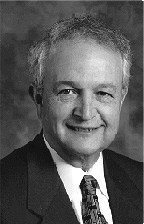

Bob Goldblum
Associate Editor
The sixth annual DoD Electromagnetic Environmental Effects (E3) Program Review (or conference in civilian terms) was held in Colorado Springs from March 22-26, 1999. Approximately 160 people were in attendance. The primary purpose of this conference was to exchange E3 and spectrum management current events and technology breakthroughs. Even though this was a DoD-sponsored event, there were no classified sessions as there have been in the past. There were many stimulating presentations, tours and workshops. In addition, two half-day seminars were presented, one on the MIL-STD-461D/462D update and the other on E3 and spectrum certification in the acquisition process. On Wednesday, 24 March, two tours were offered to the attendees. One, limited to Government only, was to Cheyenne Mountain, and the other to Schriever AFB.
In the DoD, E3 is ruled by regulations, the highest level being DoD Regulation 5000.2-R. The workshop centered on Appendix III of this regulation.“Test and Evaluation Master Plan Mandatory Procedures and Format” focused on the development of Critical Operational Issues (COIs) and how to evaluate the system against the COIs and technical E3 and spectrum certification requirements. Partial operational requirements documents were distributed to attendees on four sample systems: the Star Rover Satellite Communications and Control System; the FALCON Aircraft; the Whirly Bird Helicopter; and the Battle Command. There were numerous additional papers presented, and unofficial conversations relating to test laboratory accreditation proved to be of special interest. Although there was still considerable resistance to implementing the NVLAP PROGRAM which NAVAIR is using, recognition was given to the fact that some sort of quality control, such as ISO 25, should be imposed on test laboratories. A conclusion on this topic was not reached, and opinions varied widely. A decision should be made at the next MIL-STD-461E revision meeting, which is scheduled for April 13th (by which time this article will have gone to press).
John Zenter, ASC/ENAE, WPAFB, OH <zentnejc@asc-en.wpafb.af.mil> gave the feature paper on MIL-STD-461E. He pointed out that the Air Force has been designated the Preparing Activity for this document which consolidates MIL-STD-461D and 462D into one document. However, official approval by the Defense Standardization Council is still pending. He then went into some of the more significant changes of MIL-STD-461E, such as changes in limits, sweep and dwell times, receiver bandwidth, susceptibility frequency scanning, changes to the general requirement and a new test setup diagram.
The appendixes from 461D and 462D have been revised and combined. The testing of large equipment has been acknowledged, along with some suggested provisions. Space in this article does not allow a thorough treatment of this subject, but I will address it in greater detail in future ITEM publications.
Newsletter readers continue to be interested in DoD activities related to E3. However, my personal involvement in these DoD activities is diminishing, since I have assumed a more administrative role at work and have reduced my direct involvement after 39 years as an EMC engineer, manager and teacher. As a consequence, my access to DoD activity information is declining, and I can no longer provide timely and accurate information in this area on a regular basis. Having spoken with editor Janet O’Neil about the situation, we agreed that this would be my last regular article. If I come across some related and significant information, I will relay it to Janet. Thus, it is farewell for now and thank you all for you kind comments and support.
Editor’s Note: Many thanks to Bob Goldblum for his contributions to the Newsletter as Associate Editor for DoD E3 Activities. You’ll be pleased to know that Bob will retain his affiliation with the Newsletter as “Editor Emeritus”. He’ll provide future articles as warranted by newsworthy events in the DoD community. Thus, Bob will continue his 31-year association with the EMC Society Newsletter. Thank you Bob!